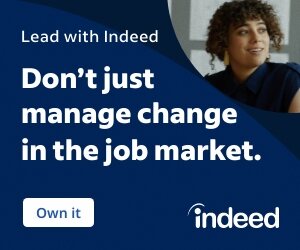Give Parents Good Benefits—and Make Them Easy to Access


“My husband would take off work, we would beg our younger siblings to watch him but it was inconvenient.” She missed numerous days because she didn’t have reliable childcare, and finally felt she “had no choice” but to resign and become a stay-at-home mom. She wasn’t informed about the child leave policies at her company, she says, which was paid FMLA for six weeks and then unpaid leave for up to four (non-consecutive) months.
Had she known about the policies, she definitely would have gone on leave rather than resign. “It would’ve given me time to figure things out and still keep my job.
While more than half of private employers in the U.S. (55%) offer paid parental leave (not to mention benefits guaranteed by law) according to the Society for Human Resource Management, what good are those benefits if everyone doesn’t know about them? And, more importantly, use them?
Here are ways to help set a corporate policy and culture where employees know what their benefits are—and how to take advantage of them.
Communicate to Current Employees
More than a third of employees said that their employer or benefits company provided no education or advice on benefits, according to the Employee Benefit Research Institute.Communicate to Future Employees, Too
Benefit information is “not always available to job seekers,” Nguyen says, noting she was excited that The Skimm, a newsletter for women, started a new #showusyourleave initiative that invites companies to go public with their benefits. The results, from almost 500 companies, are collected in a public database, enumerating everything from paid leave to miscarriage and pregnancy loss leave to fertility support and transition back to work plans. “It’s great to see all the companies share their policies,” she says, though she notes that “I don’t believe the presence of a policy or benefit necessarily leads to people taking it – there are cultural norms and an adoption [of a policy] that has to exist side by side with a policy.”Lead by Example
Nearly half of men support paid paternity leave, and federal law allows fathers to take up to 12 unpaid weeks off. But even though three out of four fathers said they wanted to spend more time with their children, 76% took one week or less paternity leave.Ngugyen says organizations should try “parenting out loud,” meaning they should lead by example. “I think where companies can really step up today is making sure people are taking the leave, and making sure that they're helping managers support people. How do they do that? Modeling it.”
Leaders should take their parental leave, either all at once or as flexible leave, if available. “There’s a lot of stigma and bias,” she says about taking paternity leave. ”When managers take available leave, it “models” to their team that benefits are made to be used.
Make Maxing Out the Norm
While some companies offer generous policies -- for example, 10-12 weeks of paid leave – often parents have to opt-in for their maximum. Why put pressure on expecting mothers by asking how much of their leave they are taking? Instead set the bar high so people have to opt-out if they want less.“Make that the norm, and then somebody has to say ‘I want to come back sooner’ or ‘I want to make my leave non-continuous.’ Let's make that be the adoption of the policy, and not just assume the minimum,” Nguyen says. Some policies call out primary vs. secondary caregivers, which often creates confusion or the false assumption that women are primary caregivers. To promote equity, one standard policy for all parents is preferred.
Make It Easy
When school nurse Hannah had her second child, she was entitled to family leave, both paid and unpaid. “But they wouldn’t file it for me and I couldn’t get the paperwork done,” she says. She couldn't take the paid leave and ultimately left her job.It’s not enough for FMLA or parental leave to be available and known; it has to be accessible, especially for new mothers, who already have their hands full dealing with a newborn (and possibly their other children).
Make Sure the Policies Are Working
It’s beneficial when companies offer and publicize their benefits, but how are these benefits actually working out for each and every individual?“You know how you do exit interviews?” Nguyen says, referring to corporate exit interviews. Mothers (and the few fathers who take their leave) should have in-depth “ramp off” interviews before leave and “ramp on” interviews after returning from leave to see how leave was for them, what can be improved, and how they will return to work, and even anniversary “stay” interviews.
Sources
- The Society for Human Resource Management, “New SHRM Research Shows Employers Offering Paid Leave Has Increased,” September, 15, 2020.
- Boston College Center for Work and Family, “The New Dad, Take Your Leave,” 2014.
- EBRI Issues Brief. “The State of Employee Benefits: Findings From the 2018 Health and Workplace Benefits Survey” By Lisa Greenwald, Greenwald & Associates, and Paul Fronstin, Ph.D., Employee Benefit Research Institute
- The Skimm “Show Us Your Leave Database.”
Author Bio
 |
Jessica Jensen is Chief Marketing Officer (CMO) at Indeed. She is responsible for brand, communication, product and acquisition marketing globally. Before joining Indeed, Jessica was CMO at OpenTable. Prior to OpenTable, she led B2B marketing for Facebook, Instagram, Messenger and other Meta platforms. She has held leadership roles at Apple and Yahoo! and started her professional career at the Boston Consulting Group. Jessica holds an MBA from INSEAD, a Masters in International Relations from U.C.S.D. and a B.A. from Amherst College. |
Error: No such template "/CustomCode/topleader/category"!


